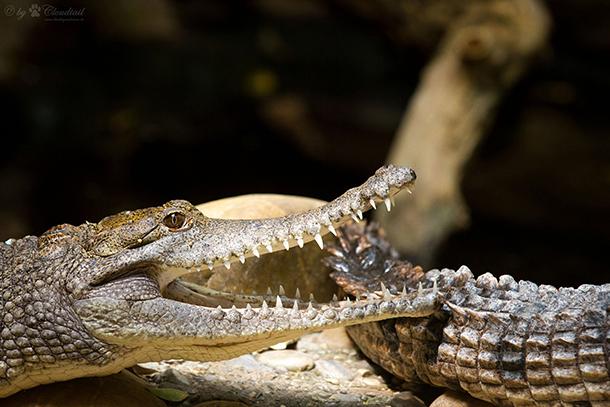Global wildlife populations continue their rapid decline
The latest Living Planet Index from World Wildlife Fund states that freshwater species, like these crocodiles, will bear the brunt of forces reducing species population globally.
A new report from the World Wildlife Fund and the Zoological Society of London says global wildlife populations have declined by almost 60 percent since the 1970s — and the losses continue.
The two organizations jointly release a biennial Living Planet report that assesses how the natural world is coping with the stress of rising human population. The outlook for the world’s wildlife is grim, according to Colby Loucks, the senior director of the Wildlife Conservation Program for WWF.
“The big findings are that we've seen a 58 percent overall decline in population sizes from 1970 to 2012,” Loucks says. "So, if in 1970, you looked out your window and saw 100 of your favorite species, today you would only see about 42."
The 58 percent decline is an average measured across over 3,700 vertebrate species, Loucks adds. In other words, while you might see only 42 crows where once you saw 100, in a pond where there used to be 100 frogs, you might see only 19.
The Living Planet report relies mostly on data from published scientific literature. “Many researchers and research organizations around the world are monitoring their own individual populations, so it's basically collecting all that information and putting it into the analysis,” Loucks explains.
The No. 1 driver of global species decline is habitat loss. No. 2 for a lot of wildlife loss is overexploitation, which is "a fancy way of saying taking too many of them away," Loucks says. "On the terrestrial side of things, that is going to be poaching. In the marine areas, it's usually overfishing.”
Pollution, which is especially bad for freshwater; invasive species; and climate change also contribute greatly to species decline. Together, all of these forces form a sort of “Five Horsemen of the Apocalypse for populations that are in decline,” Loucks says.
The biggest loss of wildlife is in fresh water, Loucks says. Fresh water species have lost, on average, 81 percent of their size between 1970 and 2012. “Only 0.8 percent of the world’s land surface is fresh water, but we [use] it for so many things,” Loucks explains. “We need it for drinking water, we need it for agriculture, we use it to create dams to generate hydroelectricity, and all of that affects the fresh water biodiversity.”
Historically, much of species loss has come from the world’s temperate zones, such as North America, Europe and Russia, where human populations have grown quickly over hundreds and thousands of years, Loucks says. But these same regions have also seen some rebounds — for example, in some of the wild cats that live in areas of Europe. On the other hand, tropical areas that are being converted from forest to agriculture, or have had new dams built on local rivers, will likely see increases in wildlife decline.
Some have been critical of the metrics of the new study and say it oversimplifies a complex problem. Loucks acknowledges the difficulty of accurately expressing a large amount of data.
“What we have is a single number: 58 percent decline in populations. The challenge is to try to portray this information in a way that can be digestible,” he says. “It's not too different from other major numbers that we hear about, such as gross domestic product.”
“GDP is the economic output of a country, and most people can understand that [it covers everything] from Apple to the local florist,” he explains. “They're very different, but they [both] have an economic output. The same is true with the Living Planet Index. We have elephants in Kenya to salamanders in West Virginia. So, this number is trying to capture and give you a taste and a sense of what is happening.”
This article is based on an interview that aired on PRI’s Living on Earth with Steve Curwood.
Every day, reporters and producers at The World are hard at work bringing you human-centered news from across the globe. But we can’t do it without you. We need your support to ensure we can continue this work for another year.
Make a gift today, and you’ll help us unlock a matching gift of $67,000!
